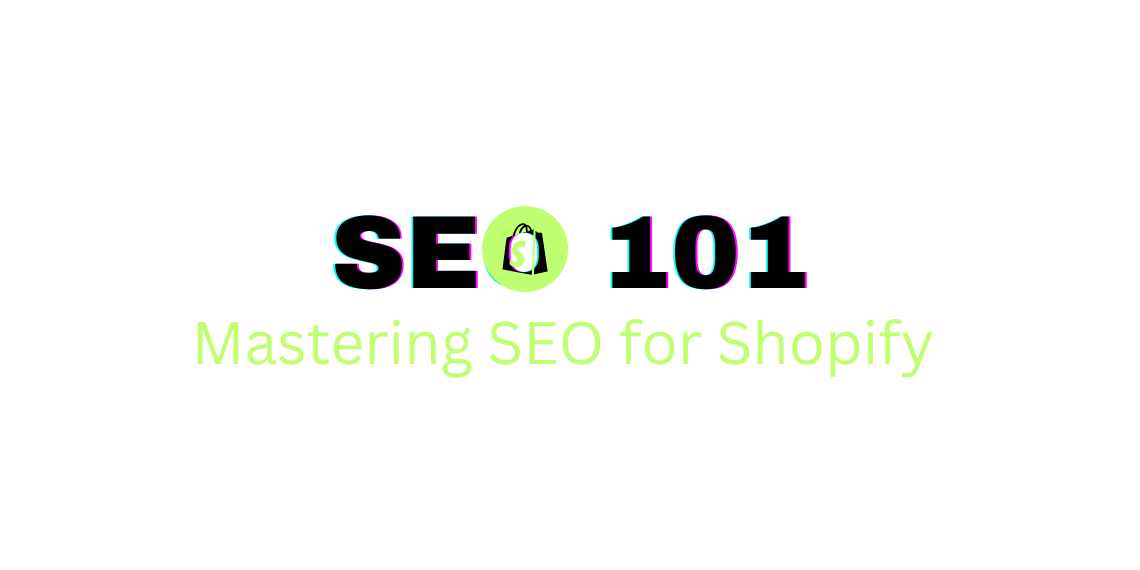Introduction
In today’s highly competitive eCommerce landscape, having a well-optimized website is crucial to drive organic traffic and generate revenue. Among the various optimization techniques, search engine optimization (SEO) plays a pivotal role in improving the visibility and rankings of your online store on search engine results pages (SERPs). In particular, optimizing Shopify collection pages can be a game-changer in increasing your organic revenue. In this blog, we will explore mastering SEO for Shopify collection pages and unlock their full potential in driving revenue growth. So, let’s dive in!
SEO 101 for Shopify

The Basics To lay a solid foundation for your SEO strategy, it’s essential to get the basics right. When it comes to Shopify collection pages, there are several key elements that require optimization to improve their visibility on search engines.
Collection Page URL Optimization
The URL of your collection page should be descriptive and optimized with relevant keywords. For example, if you are selling handcrafted chocolates, a URL like “https://yourstore.com/collections/handcrafted-chocolates” would be more SEO-friendly compared to a generic URL like “https://yourstore.com/collections/12345.”
Collection Title SEO
The title of your collection page should be optimized with relevant keywords that reflect the theme of the collection. This helps search engines understand the content of your page and rank it accordingly.
Collection Description SEO
The description of your collection page should provide a concise overview of the products in the collection and should be optimized with relevant keywords. This helps search engines and potential customers understand what your collection is about.
Collection Meta Description SEO
The meta description of your collection page is the brief summary that appears in the search results. It should be engaging, keyword-rich, and provide a compelling reason for users to click on your collection page.
Collection Featured Image Optimization
The featured image of your collection page should be visually appealing and relevant to the theme of the collection. It should also be optimized with descriptive alt text and file name, which helps search engines understand the content of the image.
Collection Title Tag SEO
The title tag of your collection page should be optimized with relevant keywords and accurately reflect the theme of the collection. It is one of the most important on-page SEO elements that search engines consider when ranking web pages.
Attributes Optimization
If your collection page has attributes such as color, size, or material, it’s important to optimize them for SEO. This can be done by using descriptive attribute names and providing unique content for each attribute, which helps search engines understand the variations within your collection.
Separated Landing Pages for SEO: Creating separate landing pages for different categories or themes within your collection can be an effective SEO strategy. Each landing page can be optimized with unique content, title tags, and meta descriptions, which can help in better rankings and visibility on SERPs.
By optimizing these basic elements, you can ensure that your Shopify collection pages are well-optimized for search engines and have a higher chance of ranking higher on SERPs.
Taking Your SEO to the Next Level
While optimizing the basic elements is crucial, taking your SEO strategy to the next level can provide a significant boost to your collection page rankings. Let’s explore some advanced strategies.
Harnessing the Power of Schema Markup for Collection Pages
Schema markup is a structured data format that helps search engines understand the content and context of your web pages. By implementing schema markup on your collection pages, you can provide additional information such as product ratings, prices, and availability, which can enhance the visibility of your collection pages on SERPs. This can also result in higher click-through rates (CTR) as search engines may display rich snippets with more information, making your collection pages stand out in search results.
Optimizing Collection Page Images
Images play a crucial role in the overall user experience of your collection pages. Optimizing your collection page images can not only improve page load times, but also help in SEO. This can be done by compressing images to reduce their file size, adding descriptive alt text and file names, and using responsive images that adapt to different screen sizes. By optimizing your images, you can improve the accessibility, usability, and search engine visibility of your collection pages.
Social Media Integration
Social media can be a powerful tool for driving traffic and engagement to your collection pages. Integrating social media sharing buttons, product pins, and other social media elements on your collection pages can encourage visitors to share your products on their social media profiles, resulting in increased visibility and traffic. Social media signals such as likes, comments, and shares can also indirectly impact your SEO rankings by increasing brand awareness and online reputation.
Monitoring and Measuring Your SEO Performance
SEO is an ongoing process, and it’s important to constantly monitor and measure the performance of your collection pages to identify areas of improvement. Here are some strategies for tracking your SEO performance.
Google Analytics
Google Analytics is a powerful tool that provides insights into various aspects of your website’s performance, including organic traffic, user behavior, conversions, and more. By setting up and regularly reviewing your Google Analytics data, you can identify which collection pages are performing well and which ones need improvement. You can also track the impact of your SEO efforts on traffic, engagement, and conversions.
Google Search Console
Google Search Console is another essential tool for monitoring your website’s performance on Google search results. It provides information on the keywords that are driving traffic to your collection pages, the performance of your meta tags and schema markup, and any issues that may be affecting the visibility of your pages on SERPs. By regularly reviewing your Google Search Console data, you can identify and fix any issues that may be hindering your SEO performance.
Ranking Tracking Tools
There are various online tools available that can help you track the rankings of your collection pages on SERPs. These tools provide insights into your current rankings, changes in rankings over time, and the performance of your competitors. By tracking your rankings, you can identify trends, measure the impact of your SEO efforts, and make data-driven decisions to optimize your collection pages for better rankings.
Conclusion
Optimizing Shopify collection pages for SEO is a critical step in driving organic revenue growth for your online store. By following the strategies outlined in this blog, including optimizing basic elements, implementing advanced strategies, and monitoring your SEO performance, you can master SEO for Shopify collection pages and unlock their full potential in driving organic traffic, engagement, and revenue. Remember, SEO is an ongoing process, so regularly review and update your strategies to stay ahead of the competition and achieve long-term.
Connect with Ali Raza, Founder of Digital Realm Trends
Follow on LinkedIn
Hello, I’m Ali Raza, the brain behind Digital Realm Trends.
Hailing from the vibrant world of digital marketing, I’ve honed my skills over years. Based on my experience, I’m here to unravel the complexities of digital marketing, analytics and paid marketing, crafted for individuals like you. Join me in uncovering the power of digital marketing tools and strategies, fueled by experimentation and insights.




